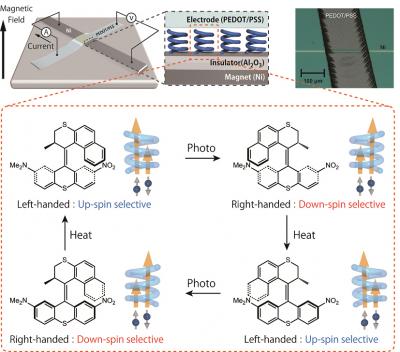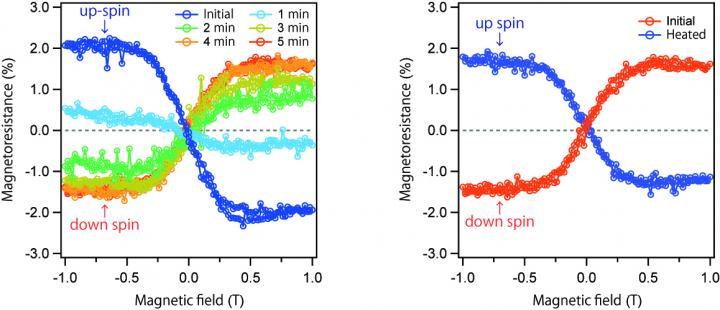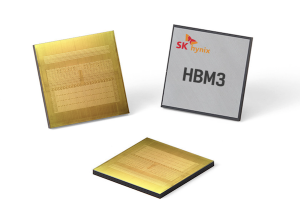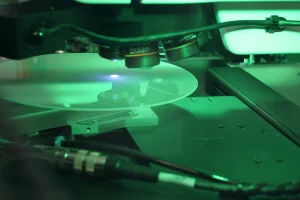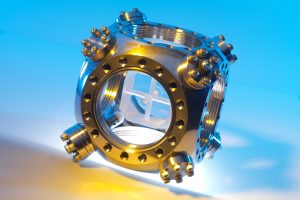Because the artificial molecular motors demonstrate 4 times chirality inversion by light irradiation and thermal treatments during the 360-degree molecular rotation, the spin-polarization direction of electrons that pass through the molecular motors should be switched by light irradiation or thermal treatments.
Figure 2 shows (left) the magnetoresistance (MR) curves recorded after various visible light-irradiation time for a device fabricated with a left-handed isomer.
In the initial state, a clear antisymmetric MR curve with a negative slope was observed, which means a clear up-spin selectivity.
The MR signal decreased as light irradiation proceeded, and finally the slope of the MR signal was inverted to positive, indicating a light-induced spin switching in the spin-polarized current from up-spin selective to down-spin through the left-handed-to-right-handed chirality inversion.
A subsequent thermal activation process for the left-handed isomer inverted the slope of the MR curve from positive to negative again, as shown in Figure 2 (right), implying a thermal-activation-induced spin switching from down-spin selective to up-spin selective through the right-handed-to-left-handed chirality inversion.
Similar phenomena were observed in subsequent measurements after photo-irradiation and thermal treatments. This series of experiments clearly demonstrated that 4 times spin switching were induced during the 360-degree rotation of the molecular motors.
In this new type of novel organic spintronics device, the right-handed/left-handed chirality, which is the origin of spin-polarization generation through the CISS effect, is reconfigurable by external stimuli and precise control of the spin-polarization direction in the spin-polarized currents by utilizing an artificial molecular motor was realized, for the first time.
The present results are beneficial for the development of next-generation organic photo/thermospintronic devices combined with molecular machines.
 Electronics Weekly Electronics Design & Components Tech News
Electronics Weekly Electronics Design & Components Tech News
